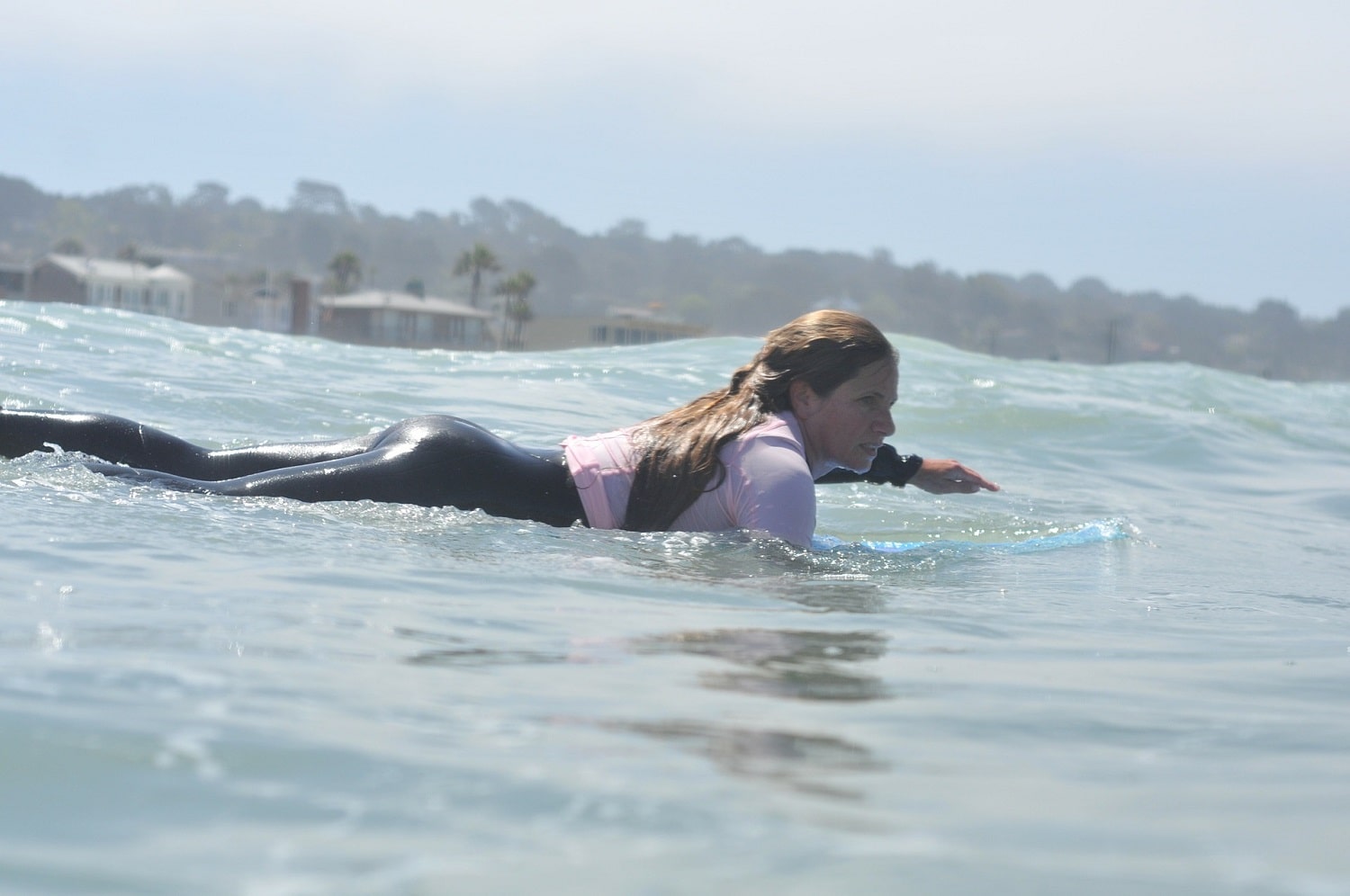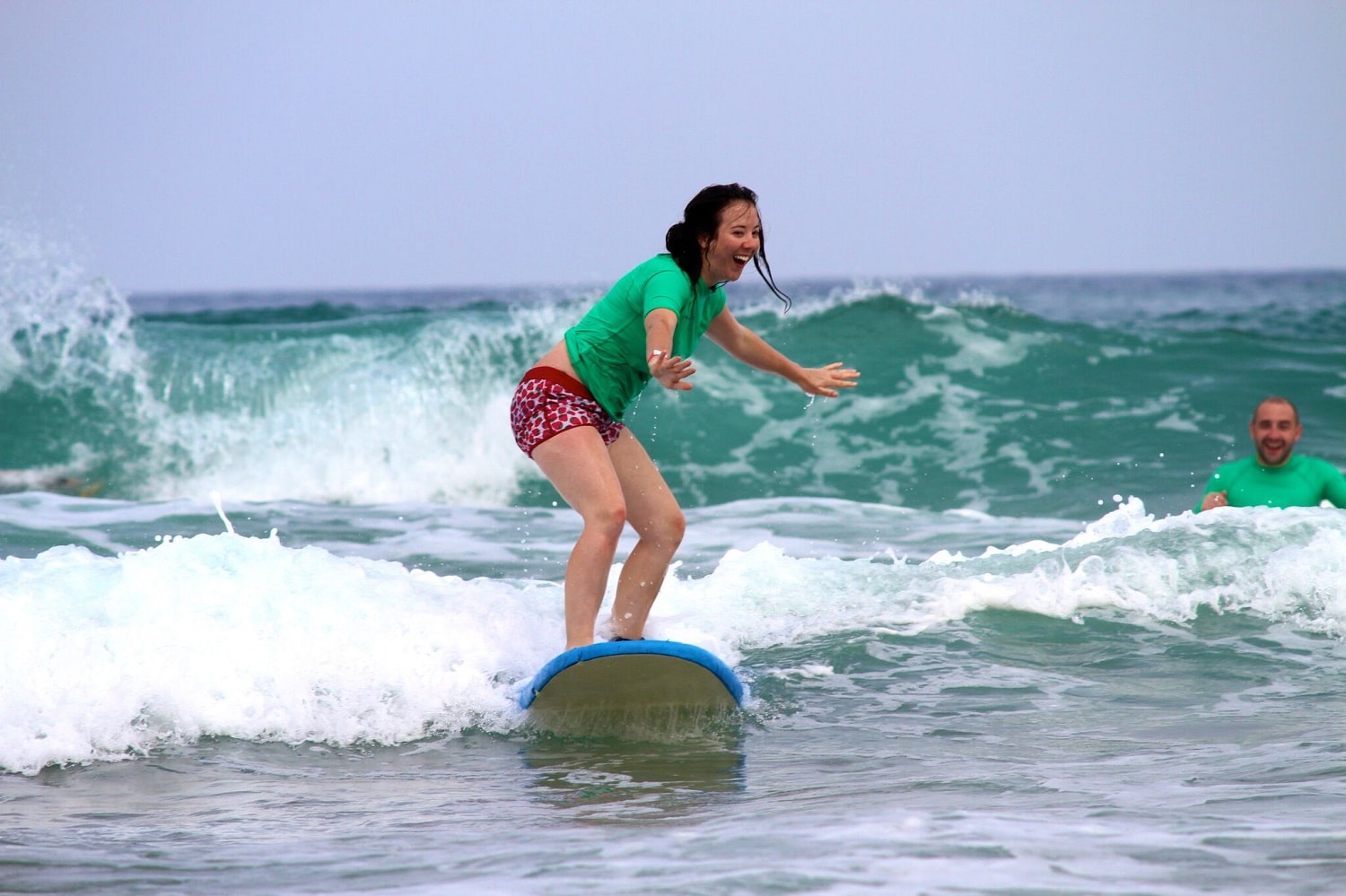Unless you live by the beach, or regularly go on watersports holidays, you probably only ever get to watch in awe when you see people surfing on TV! While some might think it’s easy to just stand up on a surfboard, anyone who has ever tried you will tell you this isn’t the case at all. While we can’t help with technique (only a qualified surf instructor can do that!), we’ve put together some strength and fitness tips before you head off on a surfing holiday to ensure you get the most out of it.
Why is it important to be fit before surfing?
This might seem like a redundant question, but other than helping you be the best surfer you can be, there are also preventative benefits of being fit. While we don’t begrudge anyone jumping in both feet first and trying surfing, without adequate training you might be also putting yourself into a situation where you’re more likely to get injured. Hand in hand with this, is the need to warm-up and cool-down before and after every session.
If you’re a total newbie to the fitness world, or just haven’t tried surfing before then you might be wondering which exercises would be most beneficial for you – look no further! While these might not be the standard workouts you’re used to, our emphasis for surfing is on functional training rather than exercises that just makes you fit right in at the gym and look impressive while doing it.
Cardio
Some of us love it, some of us hate it but a little cardio work won’t only have value for your surfing, but your all-round health. Aerobic fitness is important for surfing because you’ll be actively using all your muscles to paddle out, push up and then hold your own against those waves! While steady cardio might be your go-to thing, a much more effective way to improve your cardio fitness levels is through high intensity interval training.
High intensity interval training (HIIT) involves going all out for shorter periods of time rather than maintaining a slower steady speed over a longer duration. One of the most well-known forms of HIIT is Tabata where you’ll go at 100% of your capacity for 20 seconds, with a 10 second gap – rinse and repeat for a few cycles. We recommend trying this out on gym bikes for an awesome end to a workout that will help your general fitness for your first surfing holiday!
Paddling
So all surfing will begin with you lying face down on the board, using your arms to paddle to the waves.

Triceps
While a range of muscles are activated during the press-up, the triceps are key in pushing the body up off the ground through the arms. If you aren’t able to do full push-ups, then why not start using a counter or ledge to push up off. After this you can transition into using a foam roller underneath your shins to help move onto ground press-ups and eventually full press-ups!
Biceps
If you’re hitting the gym to get your training in, then you’ve probably seen those yellow and black hanging suspension cables and wondered what they’re used for. A great bicep workout can be done on the TRX equipment, rather like an inverse press-up, lie flat underneath with your feet flat and knees up, holding the handles. By tensing your biceps and pulling up, pull yourself up until your elbows are tucked into your side at a 90 degree angle. Lower yourself back down and repeat for around 8 reps or so.
Deltoid (shoulder)
For shoulder muscles, a good old shoulder press can do wonders. To start with, try kneeling with 1 knee down and the other foot flat on the floor. Using a dumbbell or kettlebell weight lift it up to your shoulder (working with the same shoulder as the knee that’s on the ground!). Lift the weight up until your arm is fully extended and then lower down to the start position. Again repeat this for about 8 reps, before switching to the other knee and shoulder.
Core
A strong core is of huge importance for surfing in order to stabilise yourself for both paddling and standing. There are plenty of variations of the traditional plank to help improve your core, but the most important thing is good form in order for this excercise to be effective (so make sure your hips aren’t too high, or too low!). Once you can do this easily for around 45 seconds, we recommend moving on to different variations. Whether that’s holding the plank position while alternating reaching each arm out to full extension, or moving one hand at a time into the high plank position and back down. These variations should be done for 10 reps each side. Alternatively try this 3-minute plank workout.
Obliques
Again strong obliques will help stabilise you on the surfboard during your next activity break. While normal planks will help your core, obliques can be strengthened through side planks. These involve lying on your side on your forearm and holding above the ground, while keeping your body from falling back or forward. Again, you can hold these for around 30seconds each side. These can be made harder by holding a weight above you (with someone spotting you!) or by raising your upper foot on a bench (take it from us – this is so much harder!).
Standing

Quads
If you’ve been to a gym before you probably know all about squats and love them just as much as everyone else… However, if you want to up your squat game and improve your quads for when you’re into that awesome standing position on your surfboard (regardless of how long you last!) then why not try the squat jump? While in the traditional squat, you push up to a normal standing position, increase this with a burst of energy to a jump, and land back into the squat position. Try this for 10 reps and let us know how much more difficult it is! As with normal squats, this can be progressed with weights (just get someone to show you how to do it first – there’s always the danger of jumping and raising the kettlebell too far!).
Glutes
Normal squats are awesome for improving your glutes! Our top tip for performing the perfect squat is to make sure you push your butt back first and work from there.
Calves
Your calves will be activated hugely when you’re keeping your balance on the surfboard, so it’s important to train them a little too before heading out to the sea. A great calf workout that will also improve your cardio at the same time is a skipping rope. There are plenty of videos on You Tube to get you started.
***
Ready to hit the waves? Our summer surf camp in northern Spain is a great value, fun way to approach the sport for the first time - as well as meet new people and socialise.
